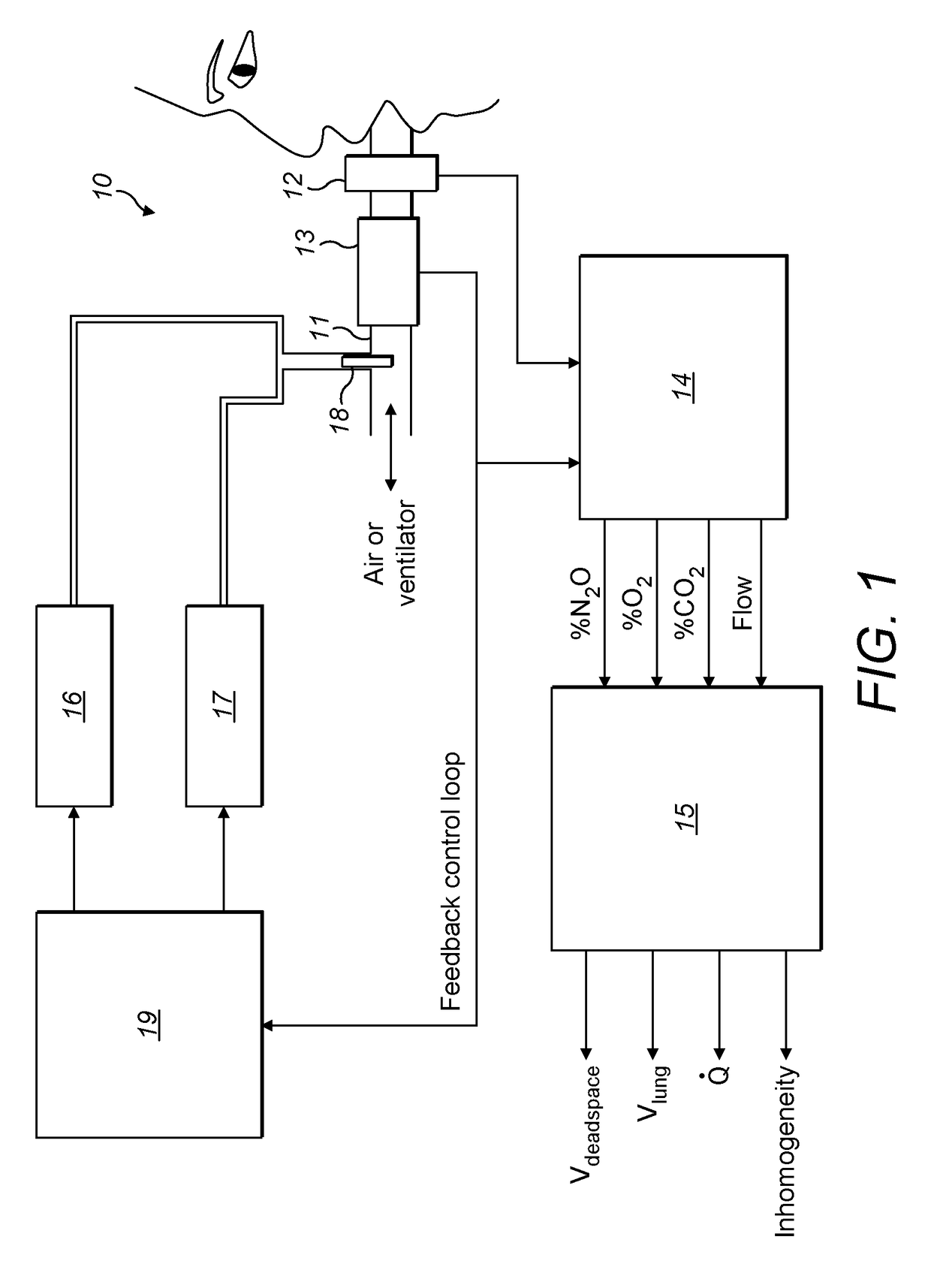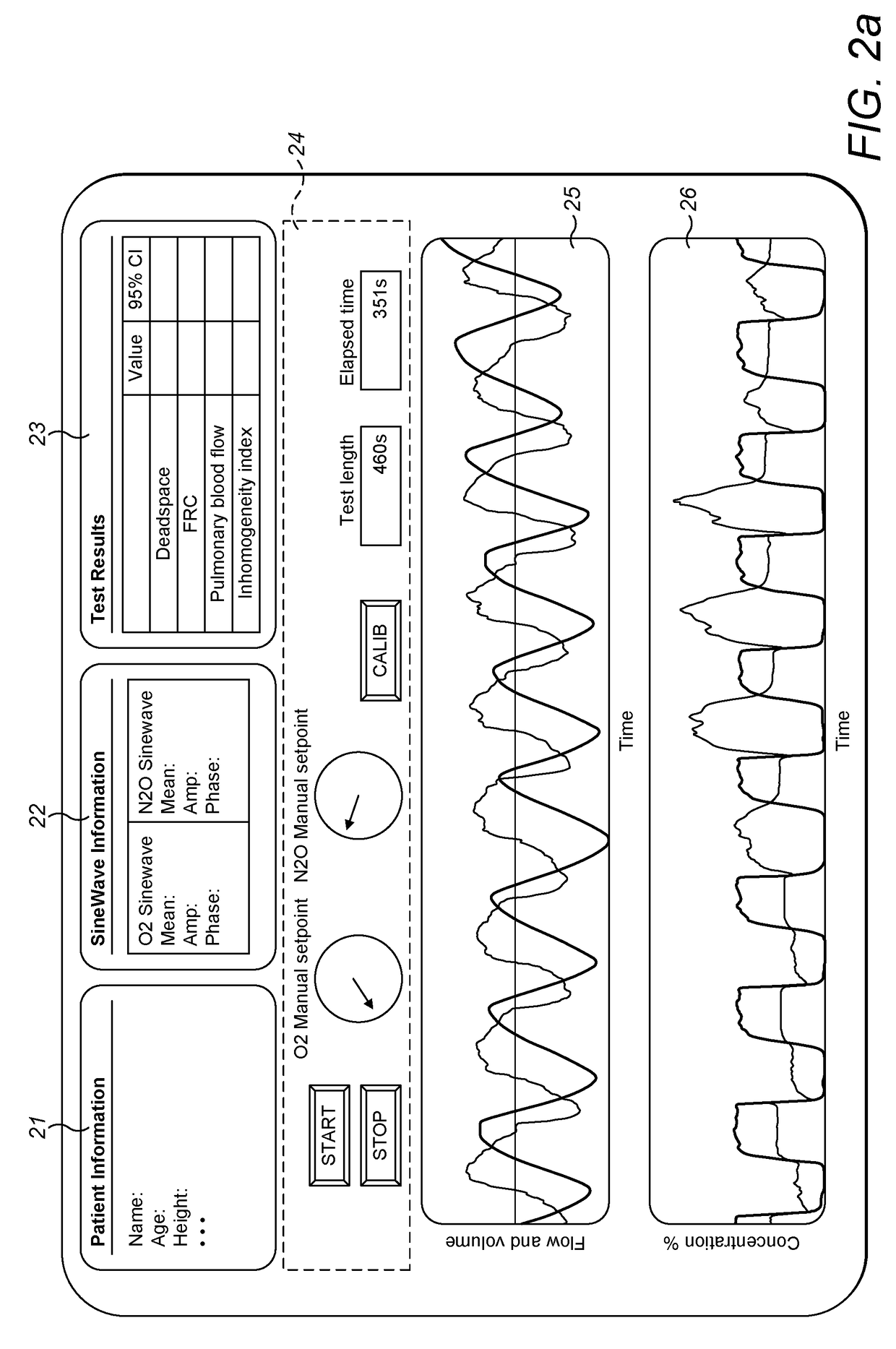Method and apparatus for measurement of cardiopulmonary function
a cardiopulmonary function and measurement method technology, applied in the field of cardiopulmonary function measurement methods and apparatuses, can solve the problems of inability to use clinically, inability to accurately estimate the frc and pulmonary blood flow, and inability to use a technique that cannot be used clinically,
- Summary
- Abstract
- Description
- Claims
- Application Information
AI Technical Summary
Benefits of technology
Problems solved by technology
Method used
Image
Examples
Embodiment Construction
Overview of the Inspired Sinewave Device
[0091]With reference to the figures, FIG. 1 provides an overview of the functional arrangement of an inspired sinewave device 10 according to an embodiment of the invention.
[0092]As illustrated, the inspired sinewave device 10 comprises a breathing tube 11, a mainstream gas analyser 12, a flow sensor 13, a data acquisition unit 14, a processing unit 15 configured to implement analysing algorithms, a N2O mass flow controller 16, an O2 mass flow controller 17, a mixing nozzle 18, and a controller 19.
[0093]In use, the patient breaths through the breathing tube 11 either by a mouthpiece or a face mask. The other end of breathing tube 11 is either connected to air (for spontaneous breathing patients) or to a ventilator (for ventilated patients). On this breathing tube 11, the mainstream gas analyser 12 is mounted to measure the concentration of N2O, and potentially of O2 and CO2 too. For example, infrared sensors can be used to measure N2O and CO2 ...
PUM
 Login to View More
Login to View More Abstract
Description
Claims
Application Information
 Login to View More
Login to View More - R&D
- Intellectual Property
- Life Sciences
- Materials
- Tech Scout
- Unparalleled Data Quality
- Higher Quality Content
- 60% Fewer Hallucinations
Browse by: Latest US Patents, China's latest patents, Technical Efficacy Thesaurus, Application Domain, Technology Topic, Popular Technical Reports.
© 2025 PatSnap. All rights reserved.Legal|Privacy policy|Modern Slavery Act Transparency Statement|Sitemap|About US| Contact US: help@patsnap.com



